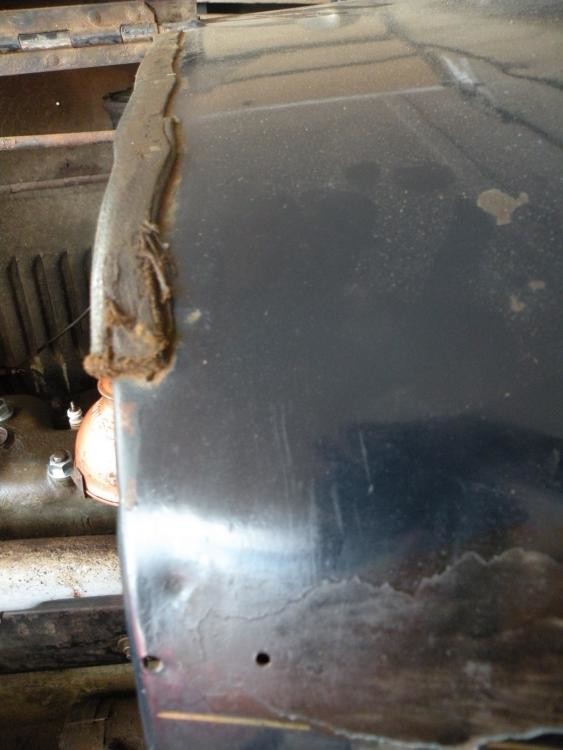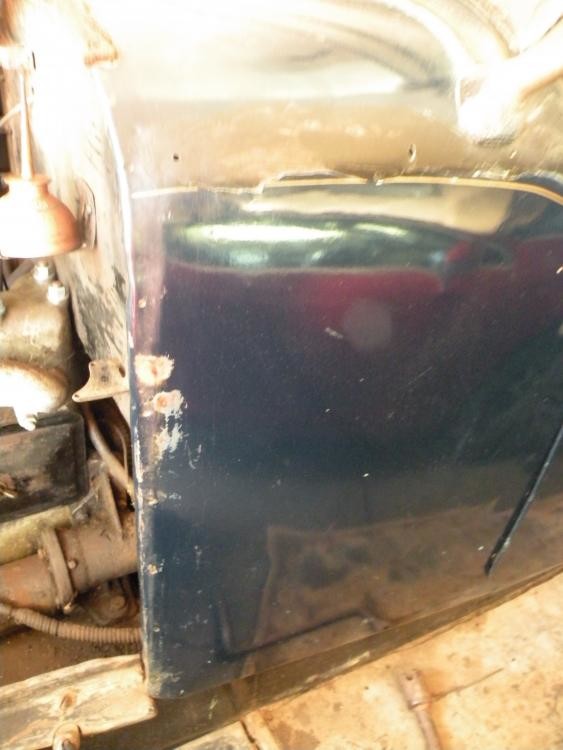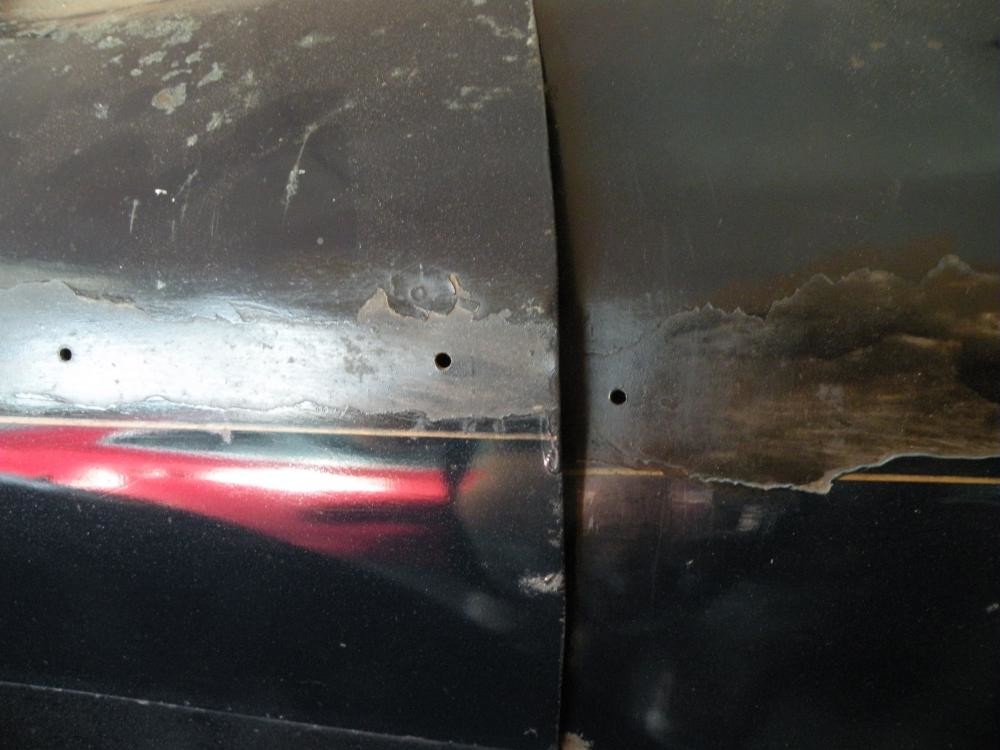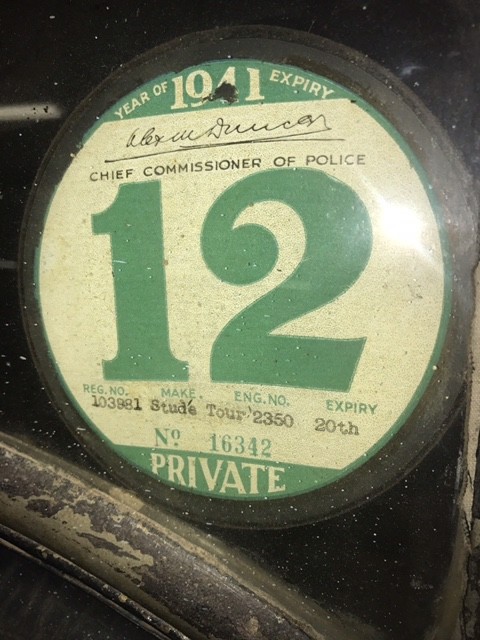You must be logged in to rate content!
3 minute(s) of a 173 minute read
9-24-2017
Thank you Paul
Now a question .....
I have actually walked around the Studebaker since our return, trying to decide what to do next. The more that I look at the car the more puzzled I tend to become. Not only does my cars body NOT have a cowl vent but also the provision for the protective "rubbing strip" around the scuttle is non existent and it seems that the protective webbing is something of an "after-thought". It is only attached across the top of the scuttle and does not continue down the sides
Is this the same for other Light Six bodies?
It strikes me that it is almost like a prototype or a "pre-production" body. I would be interested to see how this compares with some other Light Six bodies.
Looking at the photo, the location of the holes that once held the decorative bead around the centre line would indicate that it (the bead) would have interfered with the seating of the hood. Again the Gold pin stripe runs right to the edge of the scuttle
Also where can I find numbers of "Right Hand Drive", Light Six built for a particular year, especially 1920 ?



9-25-2017
Thank you nzcarnerd
Sorry, but I have little or no knowledge of my cars origin. I am endeavouring to learn as much as I can about it, but it's history is very vague.
Only a very few people still alive seem to have even known of its existence prior to my purchase just a few weeks back. As a car exported to Australia when new in 1920 it was only driven up to 1942 and covered just 36016 miles in those 22 years. Engine Number shown on the registration disk, 2350 is correct.
About 1,600 miles per year#.
# For comparison, we have just last week driven that far in our 1934 Lagonda Rapier in four days.
See also:-
- INTERNATIONAL MAKES & MODELS
- British (MG, Triumph, Jaguar, etc.)
- Lagonda Rapiers
